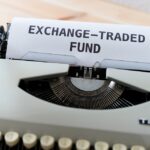
Actively managed portfolios are not a device of nefarious origin. And neither is it a “dead exercise” as the vox populi has declared. Nevertheless, to be successful at active investing, there are some big time hurdles. Before we discuss these obstacles, let’s first clarify the term “active investor.”
An “active investor” is somebody who is managing a portfolio of investments that is different, in both composition and character, compared to benchmark indexes within the same asset class. I rather like how William F. Sharpe, Nobel Prize winner in economics, described it.

He wrote:
“An active investor is one who is not passive. His or her portfolio will different from that of the passive managers at some or all times. Because active managers usually act on perceptions of mispricings, and because such perceptions change relatively frequently, such managers tend to trade fairly frequently – hence the term ‘active.’”
The active investor’s goal, of course, is that the effort of being different from “passive” index investors will produce index-beating performance. It’s a noble goal, but one that goes unrealized more often that not.
The Hurdles
Among the biggest obstacles for active investors are costs. Since active and passive returns are the exact same before costs, and because active managers bear greater costs, the after-cost returns from active management, in aggregate, will be lower compared to passive indexes. These higher costs for active management come in various forms, from higher fund expense ratios to higher brokerage transaction costs and the tax burden of those transactions.
Then too, there are psychological hurdles.
Active investors and managers, for instance, can be victims of herd mentality. How many active investors were overweight technology stocks in late 1999 right before the dotcom bust? Other times, active investors are so stubbornly fixed on a certain approach, they get blindsided by their own self-wisdom. Bruce Berkowtiz at Fairholme Funds (Nasdaq:FAIRX) has been bludgeoned by Sears (Nasdaq:SHLD), yet he continues to buy more and more stock of the beleaguered retailer on every seeming dip. Bruce is a good example of the self-destruction that embroils some active investors when they get in too deep and they want to keep going even deeper.












